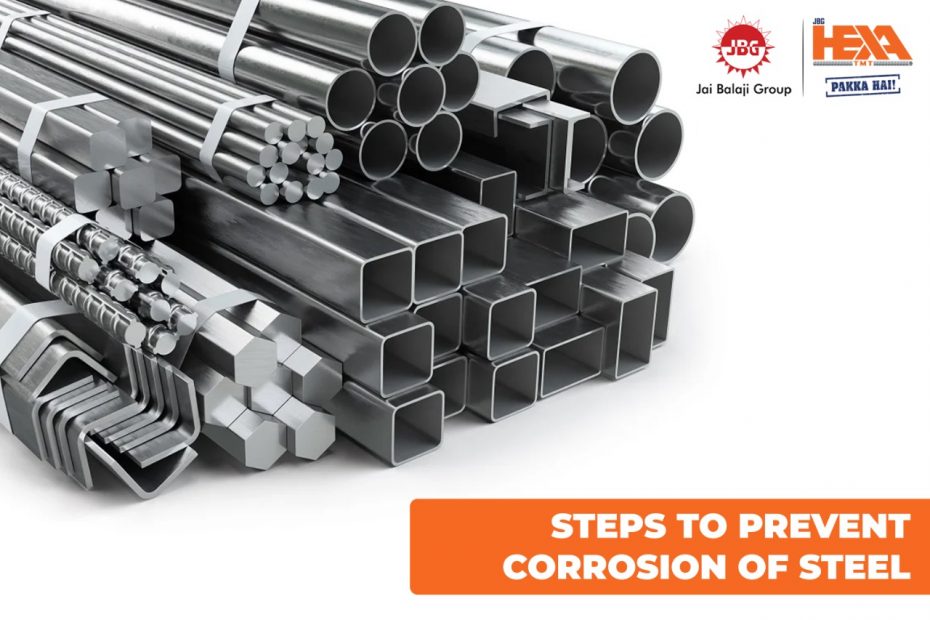Corrosion in steel is the deterioration of steel caused by environmental factors. It is a natural occurrence, which happens in the presence of moisture, a metallic surface, and an oxidizing factor or an electron acceptor.
The process of corrosion in steel converts the reactive steel surface into a more solid form, namely its oxide, hydroxide, or sulfide. The most common type of corrosion is rust.
Corrosion in steel can have many negative effects, including a reduction in its physical properties which has the potential to lead to accidents such as collapses, which is why it is essential for both steel and metal manufacturers as well as consumers to take steps to prevent corrosion.
STEPS TO PREVENT CORROSION IN STEEL:
- Design– The steps to prevent corrosion in steel starts at the engineering level. If the part is for use in an environment where it is an easy target to corrosion, manufacturers should design the part with that in mind. To lessen the corrosion, designers should remove narrow gaps that let air or water enter and become dirty or stale. Our use of the German Thermex technology ensures that corrosion is minimized.
- Protective Coating– Different types of protective coatings, like zinc coating, powder coating, and their likes, act as a physical block between the metallic surface and the oxidizing environment, thereby protecting the surface.
- Environmental Measures– Corrosion is caused by a chemical reaction between metals and gases in the immediate environment. By taking steps to control the composition of the environment, these unwanted reactions can be lessened manifold. This can be as simple as keeping down exposure to rain or seawater, or more difficult measures, such as controlling the amounts of sulfur, chlorine, or oxygen in the nearby environment.
- Cathodic Protection– It is possible to prevent corrosion by putting an opposite electrical current to the steel’s surface. The most common example of cathodic protection is the coating of iron alloy steel with zinc, a process known as galvanizing. Zinc is a more active metal than steel, and when it starts to corrode it oxides which hold back the corrosion of the steel. This method is called cathodic protection and is an important method in the steps to prevent corrosion because it works by making the steel the cathode of an electrochemical cell.
- Maintenance– Protective coatings, environmental control, and cathodic protection are useful steps to prevent corrosion in steel. However, these measures will be futile without constant maintenance and monitoring. Coatings can get weak over time; even small nicks and scratches can lead to corrosion. Cleanliness of the parts and applying added protection is a basic need.
By understanding corrosion plant operators, we can almost predict where rust is likely to occur and identify the environmental factors in the plant that speed up corrosion. Paints are also important in the steps to prevent corrosion and they work because they can slow down corrosion by lowering the grade of current flow in the electrochemical corrosion process. Regular maintenance by plant operators can lessen the appearance and effects of corrosion in steel. JBG HEXA is leading TMT bar manufacturer in India and produce best quality corrosion free steel bar.
Like, share, and comment if you found this guide to prevent corrosion helpfully!
